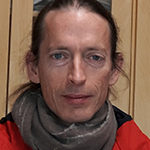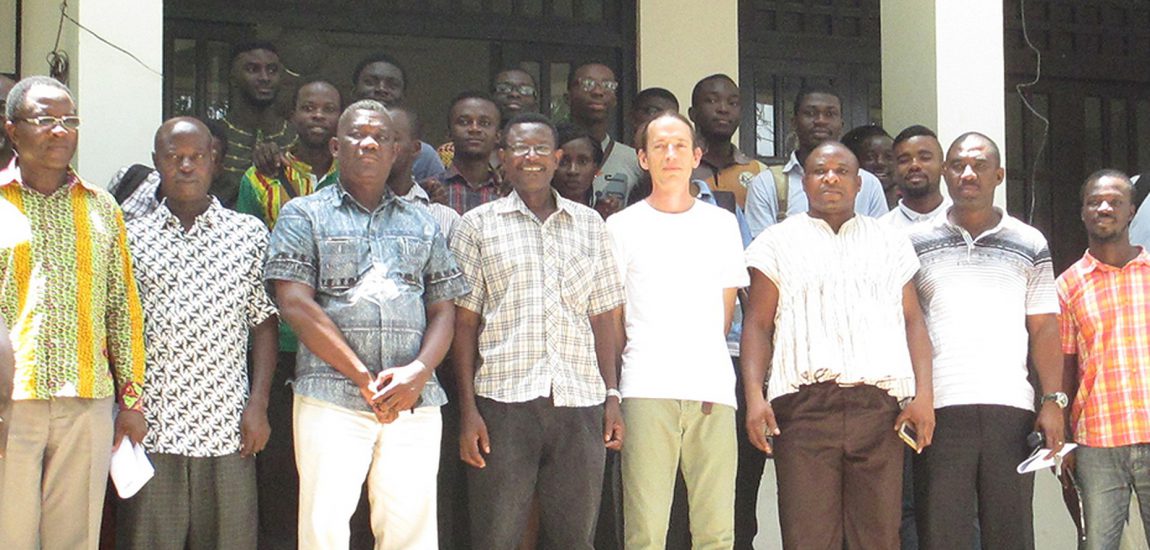
Axel Hofmann’s 2017 EAG-GS Outreach Program to Africa
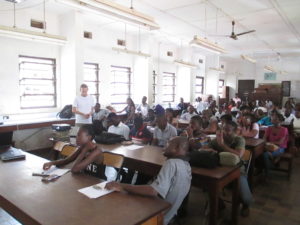
As part of the 2017 EAG-GS Outreach Program to Africa I travelled to Earth Science departments in Ghana, Ethiopia, Tanzania, and Nigeria to give a 3-day short course on Early Earth Life and Mineral Systems. The course explored the relationship between surface processes, evolution of life and the formation of mineral deposits on the early Earth. Africa has a rich record of Archaean geology, and I aimed to outline some of the geochronological and geochemical tools available to tap into this record. Beside promoting geochemistry in Africa, a more personal goal of the course was aimed at intensifying Pan-African collaboration, being based in Africa myself, at the University of Johannesburg.
In April I visited the University of Ghana, where I received a warm welcome from Profs. Mark Yidana, Prosper Nude, and Frank Nyame, who looked after me during the three days of lectures in the geology department. During joint lunches we had general discussions on African geology, options of support of scientific research and student bursaries, and accessibility of analytical facilities. The course was attended by c. 50 students and staff members from the department. Supervising a Ghanaian Ph.D. student myself, I used the occasion to visit his project area in the northern part of the country after the course. The project is centred on gold mineralization, one of the most important commodities in Early Earth rocks.
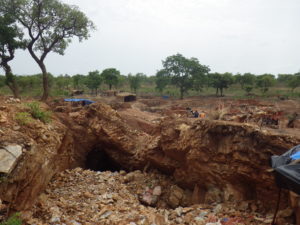
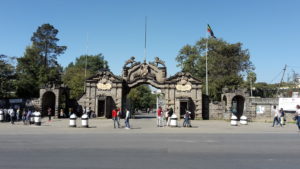
For November I had planned to visit Nigeria, but the university teaching calendar had to be readjusted due to countrywide strike action by academic staff. As a result, end of November I travelled to Tanzania instead, with a stop-over in Ethiopia. Earlier attempts to contact the geology department at the University of Nairobi in Kenya fell on deaf ears, possibly because of student unrest during that time. Staying 5 days in Addis Ababa was a pleasant experience due to blue skies, cool air, and Ethiopian hospitality at the university, arranged by Profs. Dereje Ayalew and Gezahegn Yirgu. A group of approximately 15 postgraduate students attended the course, which was a sizeable number keeping in mind that Ethiopia’s basement is mainly Neoproterozoic in age.
The following week was spent at the University of Dar-es-Salaam, where ~35 postgraduate students and members of the Tanzania Geological Society (TGS) followed the course. Because of the abundance of Archaean rocks in the Tanzanian craton, there were some lively discussions on Early Earth processes. Drs. Elisante Mshiu, Ernest Mulaya and Emmanuel Kazimoto hosted me, and the TGS sponsored refreshments and a joint lunch. Thanks to you all. Being in Tanzania in December, I used the opportunity to travel around the country for a year-end holiday, trying to avoid as much as possible the rather pricey national parks.
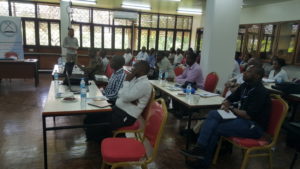
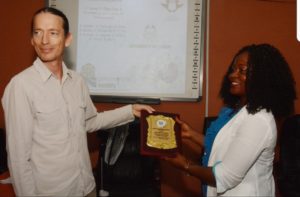
In January, teaching in Nigeria was back to normal, so I decided to complete my lecture tour by visiting the universities of Zaria, Ibadan and Lagos. Thanks to Profs Tavershima Najime (ABU Zaria), Olugbenga Ehinola (UI), and Samuel Olobaniyi (UniLag) for arranging for my tour. A diverse mix of ~40 postgraduate students and staff, coming from as far as Kano, attended in Zaria, well known for its ancient walled town and Precambrian basement geology. The university campus is surrounded by peaceful agricultural land and thus far away from the hustle-and-bustle commonly encountered in Nigerian cities. Thanks to Harmattan winds, the weather was pleasant, albeit too cool for residents. At Ibadan the audience included many PhD students from around Africa. UI is the oldest Nigerian university, and the geology department is host to the Life and Earth Sciences unit of the Pan-African University. Certificates of attendance were handed out, like at most other departments, and I got my own certificate too. I used it later as proof at my workplace for having travelled to Nigeria for work and not for wheeling and dealing. The last stop was in Lagos, where more than 100 predominantly undergraduate students tested my patience. I hope that I was able to arouse some interest in them in the evolution of the ancient Earth as a system. There is an interesting array of Precambrian rocks in Nigeria, and I am specifically referring to the schist belts here, which appear largely undated. Much field-based research in combination with geochronology and geochemistry is required. There is no shortage of students there to do the job, but access to analytical facilities and trained technical staff are needed, which applies to most departments visted. The EAG-GS Outreach Program to Africa can provide some useful guidance. A big thanks to Marie-Aude Hulshoff, Bernard Marty, and the EAG and the GS for making this tour through Africa possible.
This report was also published in the June 2018 issue of Elements Magazine.
About the author
Axel Hofmann, the 2017 EAG-GS Outreach Lecturer, is an Associate Professor at the Department of Geology of the University of Johannesburg in South Africa. His main interest and expertise is centred on the Archaean geological record of southern Africa. His research is undertaken at the interface between geology, geochemistry and geobiology, utilizing analytical equipment for in-situ trace element geochemistry, geochronology and (non-traditional) stable isotope geochemistry at the micro- and nano-scale, for the understanding of Archaean surface processes, early life and sediment-hosted mineral deposits.
